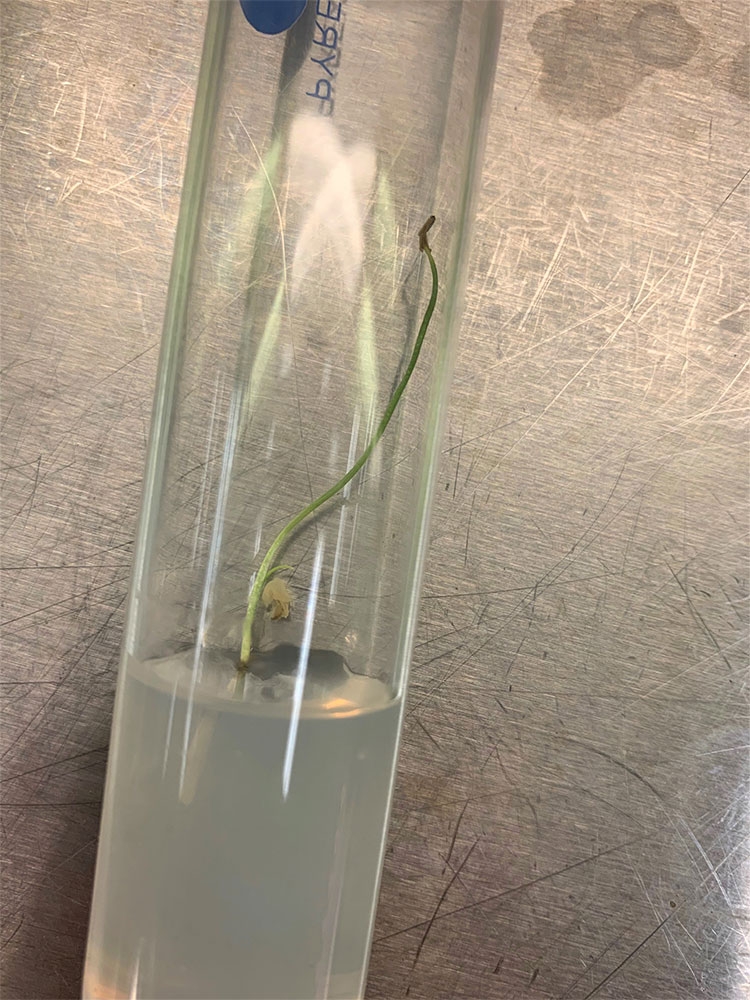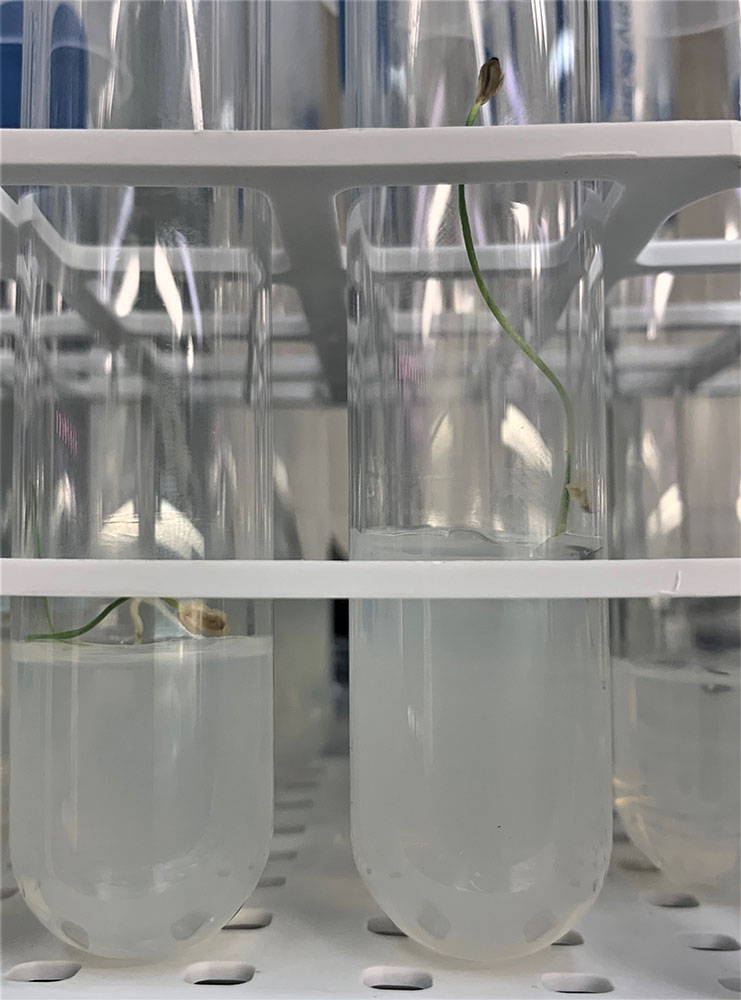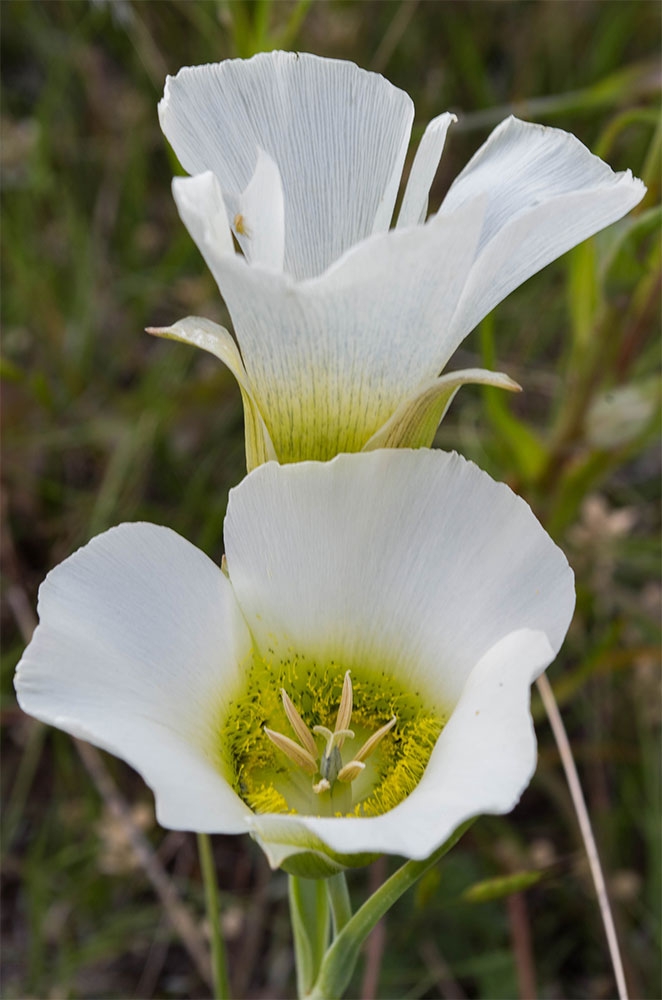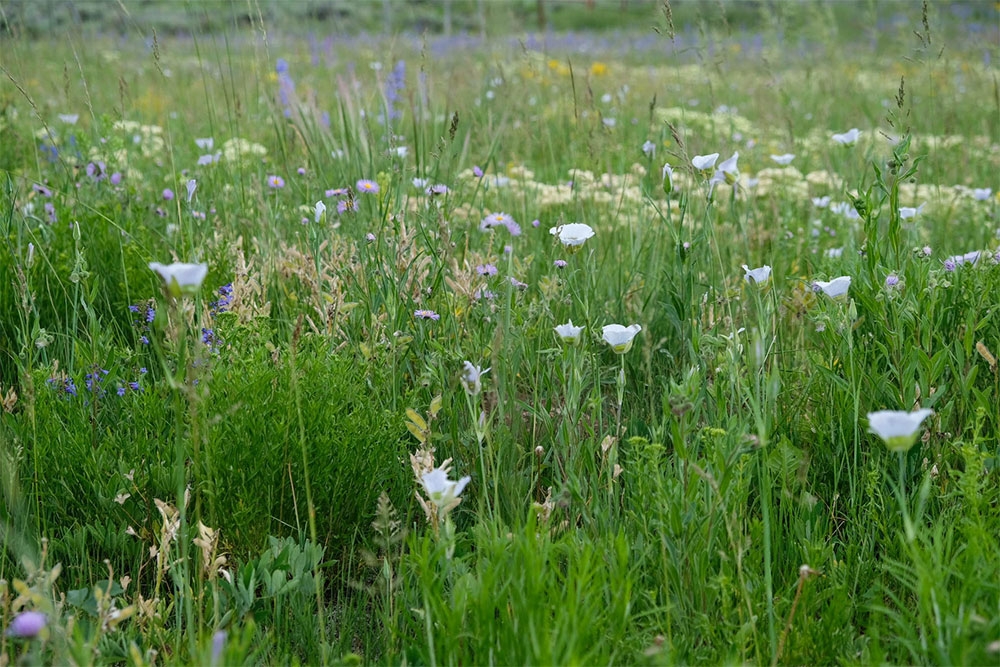A Chance for Mariposa Lily
We horticulturists at Denver Botanic Gardens love plants, especially those that are lesser known and difficult to grow. However, these traits usually mean we have trouble finding and growing them. One example is Gunnison’s Mariposa lily, Calochortus gunnisonii. The Mariposa lily is a spring flowering bulb native from the southwestern United States into Canada, following the Rocky Mountains. It is a small, unassuming plant that puts on a brilliant display in the spring time. Beautiful large, white flowers can be seen popping up in montane meadows adding splendor to an already impressive display this year.
Suffice to say, we want this plant for our collections and displays. The trouble, however, is growing them. Seeds can be difficult to obtain and tricky to germinate. Then, the young seedlings require very specific conditions to grow. Above all that, it can take five to seven years to grow a flowering plant from a seed.
To overcome some of these challenges, around 30 seeds were collected in Wyoming with proper permits and permissions from the respective land agencies by horticulturists Michael Guidi and Mike Kintgen. In the Gardens tissue culture lab, I carefully sterilized the seeds, placed them into culture tubes and then left them in the fridge for eight weeks. A fridge might seem a weird place for growing plants, but the Mariposa lily needs dark, cold conditions to germinate. The fridge is the perfect temperature to mimic the time of year when winter starts yielding to spring and temperatures come just above freezing. These temperatures induce the seeds to begin germinating. Since they might need more time in the cold, only half of the seeds were removed and placed in the light at room temperature. The other half were left in cold for another month.
I was not expecting much with this first attempt, but I was so excited when 10 of the seeds germinated! I learned that that extra month really helped more seeds germinate. Now, 10 seedlings may not seem like a lot, but in tissue culture you can clone a massive amount of plants from only one seedling. Tissue culture also provides other benefits towards some of the struggles we have with this plant. For example, I hope to have a flowering plant in only three or four years, instead of five to seven. The time to maturity can be shortened because the plant will not experience winter and will not go dormant or create bulbs while in tissue culture. The gel media it sits on contains all the nutrients, salts and sugars the plant requires to keep growing quickly to maturity. Keep an eye out in the Gardens over the next few years, because we might just have success with this beautiful Mariposa lily.
Gallery




Comments
Saw Mariposa Lilys while hiking!
Spruce Mountain, Larkspur CO is my favorite place to hike, I've gone there several years to do so. This is the first year I saw these beautiful flowers and found they are the Mariposa Lily. They are growing all along the hiking path at the top! I wanted to see if they can be planted in my garden, but I won't go to these lengths to do so. That makes me wonder though...how on earth they bloomed up there this year?? We have had a lot more moisture than previous years, but still a delightful surprise to see a beautiful flower in my favorite hiking spot.
Add new comment